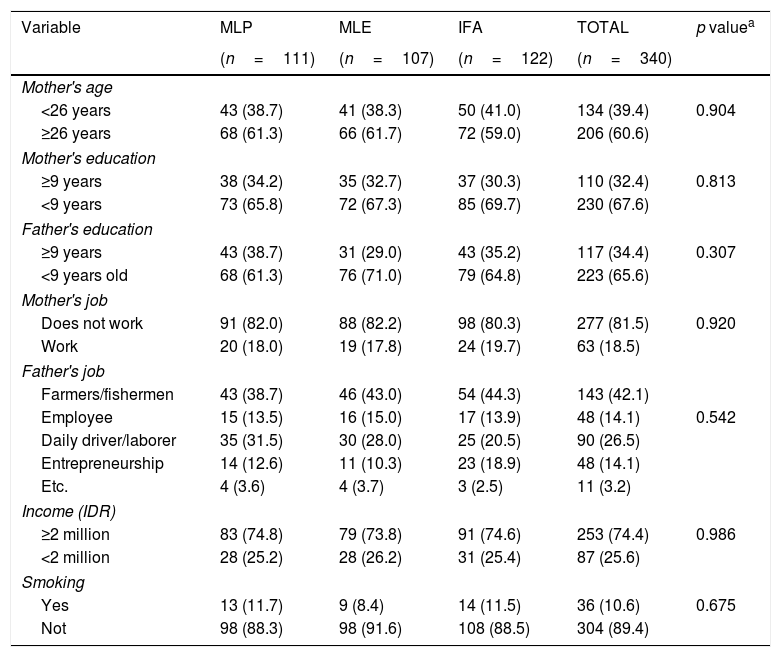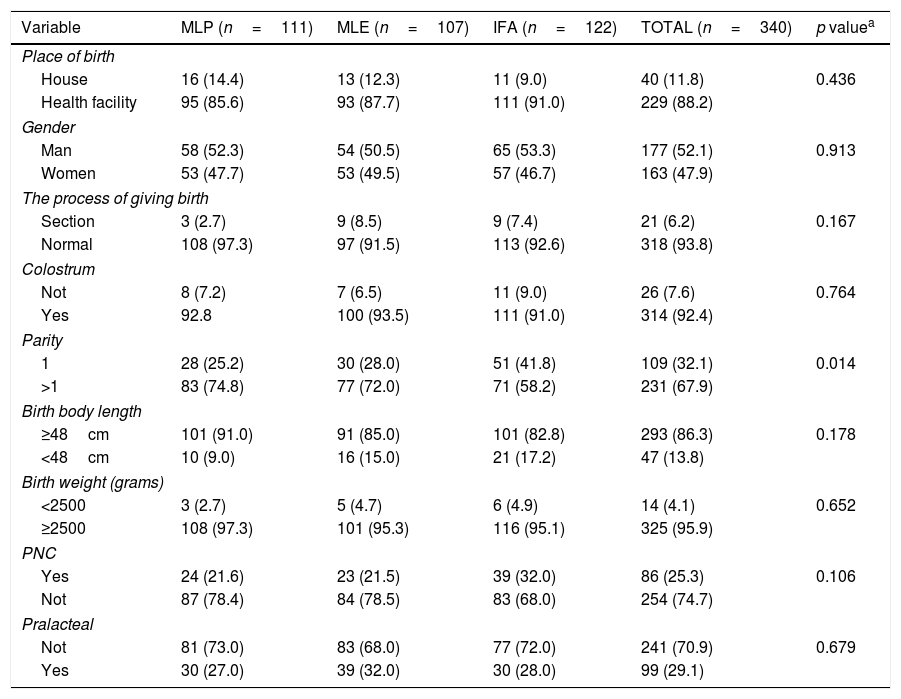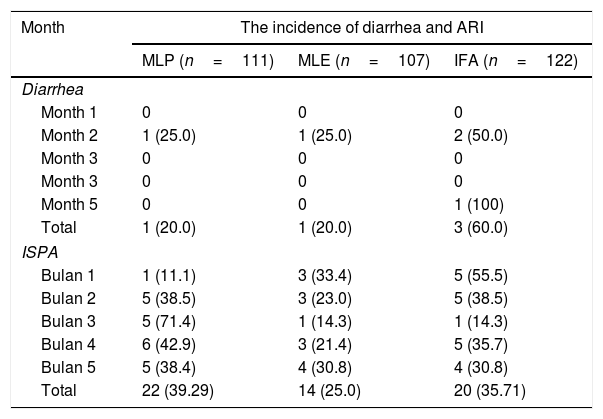Moringa leaves (ML) has been proved as a nutrient supplement during pregnancy. This study was undertaken to assess the effect of ML on growth and morbidity of infant 0–5mo of age.
MethodThis study was an intervention study. Subjects were originally pregnant mothers who were divided into three groups: group received ML powder (MLP, n=111), group received ML extract (MLE, n=107), and group received iron folic acid (IFA, n=122). Each group received two capsules a day for 12 weeks during pregnancy and 4 weeks after giving birth. Growth and morbidity measurement were assessed each month during 5mo period. Data was analyzed using Chi-squares.
ResultsStudy showed that prevalence of under nutrition at the first sixth moths were 2.4%, 3.2%, 6.5%, 7.4%, 9.7%, and 7.9%, respectively for 0–5mo. In addition, the prevalence of stunting were 3.2%, 9.7%, 20.0%, 24.7%, 19.6%, and 19.4%, respectively for 0–5mo. The prevalence of wasting were 5.9%, 5.0%, 2.1%, 2.1%, 2.6%, 3.2% respectively for 0–5mo. Not significantly different among groups in all parameters (p>0.05). Upper respiratory infection was the most infection at the first 6mo (2.06–4.2%).
ConclusionWe conclude that ML tends to protect from under nutrition to the infant but not stunting.










